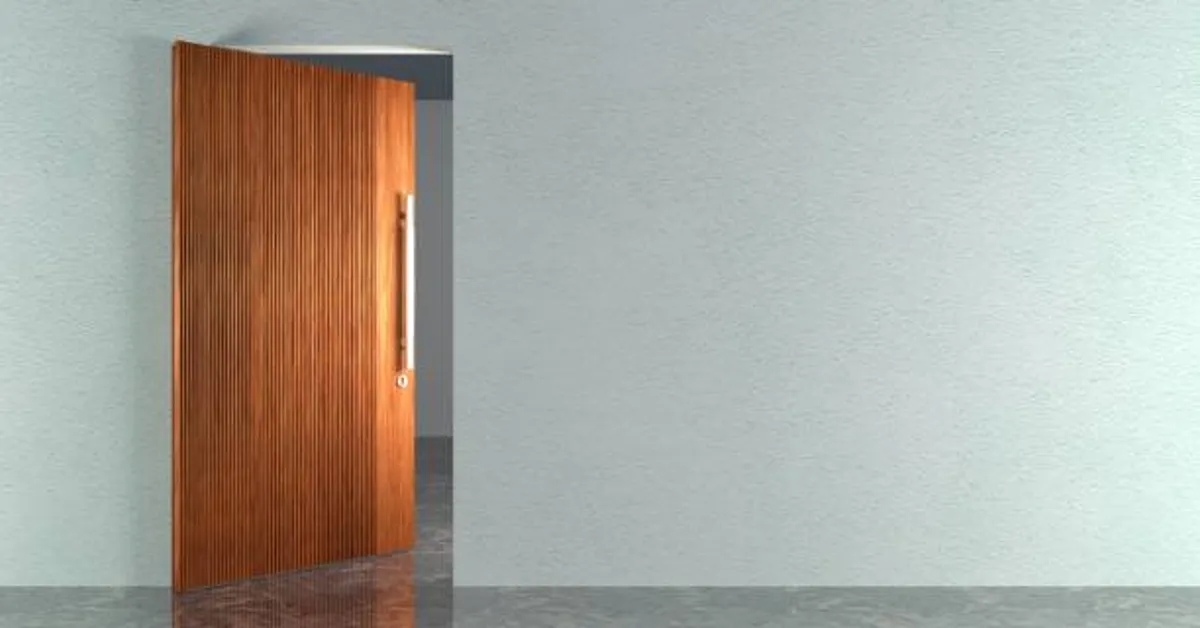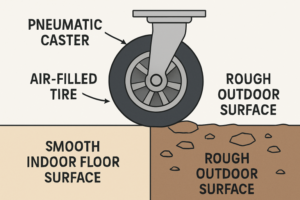A porta pivotante, often referred to as a pivot door, is more than just an entryway; it is a striking architectural element that combines beauty, engineering, and functionality. Unlike traditional hinged doors that rely on side hinges attached to the frame, pivot doors rotate on a vertical axis anchored by pivot hinges fixed at the top and bottom. This innovative mechanism makes them appear larger, more elegant, and smoother in operation. Over the past decade, the demand for pivot doors has grown steadily, as homeowners, architects, and interior designers seek modern solutions that emphasize open spaces, clean lines, and luxurious finishes.
In this comprehensive article, we will dive into every aspect of the porta pivotante—its history, types, benefits, materials, design possibilities, installation process, and maintenance. We will also provide comparative tables, practical considerations, and frequently asked questions, making this guide a complete resource for anyone considering a pivot door for their home or office.
Understanding the Concept of a Porta Pivotante
A pivot door derives its name from the pivoting mechanism that allows the door to rotate smoothly on a vertical spindle instead of swinging outward or inward from side hinges. The axis of rotation can be placed at different distances from the frame, which gives designers more creative freedom.
In most designs, the pivot point is set a few centimeters away from the edge, meaning that part of the door projects outward while the other part remains inside when opened. This creates a dramatic effect, especially for large entry doors that might otherwise be too heavy for traditional hinges.
Pivot doors are not limited to residential use; they are also widely found in commercial spaces, luxury offices, showrooms, and boutique hotels. Their ability to combine aesthetics with practicality has positioned them as a hallmark of modern architecture.
A Brief History of Pivot Doors
Although pivot doors are often seen as a contemporary innovation, the concept is much older. Ancient civilizations used primitive pivoting mechanisms in stone or wooden doors. For instance, some of the earliest temples and palaces in the Middle East featured massive doors rotating on stone pivots, as metal hinges of that era could not withstand the weight.
The modern revival of pivot doors began in the 20th century, as architects embraced minimalism and sought alternatives to conventional hinges. Today, advanced pivot hinge systems allow doors to be made taller, wider, and heavier without compromising durability or functionality.
Advantages of a Porta Pivotante
Pivot doors offer numerous benefits that make them stand out compared to traditional hinged doors.
| Feature | Traditional Hinged Door | Porta Pivotante |
|---|---|---|
| Weight Capacity | Limited by side hinges | Can support very large and heavy panels |
| Aesthetic Appeal | Conventional look | Sleek, modern, and luxurious appearance |
| Durability | Hinges may wear quickly | Heavy-duty pivot systems last longer |
| Space Utilization | Requires full swing clearance | Partial projection, more versatile |
| Customization | Standard sizes and shapes | Allows oversized, custom, and unique designs |
Key Benefits Explained
- Modern Aesthetic – A pivot door instantly upgrades the architectural feel of a space. The seamless and balanced rotation creates a statement at entryways.
- Support for Large Panels – Unlike side hinges, pivot systems can easily support tall and wide doors made from heavy materials such as metal, glass, or solid wood.
- Smooth Operation – High-quality pivot hinges include hydraulic or soft-close features, ensuring smooth opening and closing without slamming.
- Design Flexibility – Pivot doors can be frameless, concealed, or highlighted with bold trims, adapting to multiple design styles.
- Durability – With fewer stress points compared to traditional hinges, pivot systems often last longer, even under heavy use.
Types of Porta Pivotante
Pivot doors are versatile and available in many styles. Below are the most common categories:
1. Based on Material
- Wooden Pivot Doors – Classic, warm, and luxurious. Suitable for residential entrances.
- Glass Pivot Doors – Elegant and modern, often used for interior partitions or offices.
- Aluminum/Metal Pivot Doors – Strong, durable, and often combined with glass for modern facades.
- Composite or Mixed Material Doors – Blend of wood, steel, and glass for unique designs.
2. Based on Design
- Single Leaf Pivot Door – The most common type, featuring a single panel.
- Double Leaf Pivot Door – Two pivoting panels, creating a grand opening effect.
- Frameless Pivot Door – Minimalist, often in glass, with no visible frame.
- Hidden/Flush Pivot Door – Designed to blend seamlessly into walls or cabinetry.
3. Based on Functionality
- Standard Pivot Door – Operates with a manual push or pull.
- Automatic Pivot Door – Equipped with sensors or automation for high-traffic areas.
- Acoustic/Insulated Pivot Door – Designed with soundproofing and thermal insulation properties.
Materials Used in Porta Pivotante
Choosing the right material is crucial for both aesthetics and durability.
| Material | Advantages | Best Use Cases |
|---|---|---|
| Solid Wood | Natural beauty, strong, warm appeal | Luxury homes, main entrances |
| Engineered Wood | Cost-effective, resistant to warping | Interior pivot doors |
| Glass | Modern, allows light flow | Offices, partitions, contemporary homes |
| Aluminum | Lightweight, corrosion-resistant | Exterior and interior doors |
| Steel | Strong, secure, industrial appeal | Security doors, commercial spaces |
| Mixed Materials | Combines strengths of different materials | Custom designs, statement entrances |
Design Considerations for Porta Pivotante
When planning to install a pivot door, certain factors should be considered:
- Size and Scale – Pivot doors are often oversized, so ensure the wall and floor can structurally support the weight.
- Pivot Placement – The pivot point can be offset closer to the edge for a conventional swing or further inside for dramatic effect.
- Aesthetic Integration – The door should harmonize with flooring, wall finishes, and overall architecture.
- Safety – Use tempered glass for glass doors and secure locking systems for main entrances.
- Insulation – For exterior pivot doors, consider thermal and acoustic insulation.
- Hardware Quality – Invest in premium pivot hinges with hydraulic or concealed mechanisms.
Installation Process of Porta Pivotante
Installing a pivot door requires precision and expertise. Here is a step-by-step overview:
- Site Preparation – The frame or opening must be reinforced to handle the weight.
- Pivot System Placement – Floor and ceiling pivots are fixed according to the desired pivot axis.
- Door Mounting – The panel is carefully attached to the pivot system.
- Alignment and Balancing – The door is tested for smooth movement and adjusted if necessary.
- Finishing Touches – Installation of handles, locks, and any decorative features.
- Inspection – Final check for alignment, safety, and ease of operation.
Maintenance of Porta Pivotante
Pivot doors are relatively low-maintenance but require proper care to ensure longevity.
- Cleaning – Wipe surfaces with mild cleaners; avoid abrasive materials.
- Lubrication – Apply suitable lubricants to pivot mechanisms if required.
- Inspection – Periodically check for alignment, cracks, or wear.
- Glass Care – For glass doors, use non-acidic cleaners.
- Weather Protection – Apply sealants for wooden doors exposed to outdoor conditions.
Applications of Porta Pivotante
Pivot doors are suitable for multiple environments:
- Residential – Luxury homes, apartments, and villas for entrances and interiors.
- Commercial – Offices, hotels, showrooms, and retail stores.
- Hospitality – Boutique hotels, restaurants, and lounges.
- Institutional – Libraries, museums, and galleries.
Comparison of Porta Pivotante with Other Door Types
| Aspect | Pivot Door | Sliding Door | Traditional Hinged Door |
|---|---|---|---|
| Aesthetic | Modern, bold | Sleek, space-saving | Classic, conventional |
| Space Requirement | Partial projection | Minimal, slides sideways | Requires full swing |
| Weight Capacity | Very high | Moderate | Limited |
| Maintenance | Moderate | Track cleaning required | Hinges wear over time |
| Cost | Higher | Moderate | Lower |
Future Trends in Porta Pivotante
The future of pivot doors is shaped by innovation and sustainability. Expect to see:
- Smart Pivot Doors – Integrated with digital locks, sensors, and home automation.
- Eco-Friendly Materials – Use of recycled metals and sustainable woods.
- Energy Efficiency – Improved insulation and sealing techniques.
- Minimalist Designs – Hidden pivot systems for seamless aesthetics.
Conclusion
The porta pivotante represents a fusion of modern engineering and artistic design. Whether installed as a grand entryway to a home, a statement piece in an office, or a sleek partition in a hotel, pivot doors embody elegance, functionality, and durability. With endless customization possibilities in size, material, and style, they are becoming a preferred choice for architects and homeowners who want to combine sophistication with practicality.
By understanding the benefits, materials, installation process, and maintenance requirements, one can make an informed decision about choosing the perfect pivot door for their space. As trends evolve, pivot doors will continue to redefine the way we think about architectural openings, setting new standards for luxury and innovation.
ALSO READ: XBunker: A Complete Guide to the Concept, Functionality, and Applications
Frequently Asked Questions (FAQs)
Q1: What is the main difference between a pivot door and a traditional hinged door?
A pivot door rotates on a vertical pivot axis instead of side hinges, allowing larger and heavier panels with smoother operation.
Q2: Are pivot doors suitable for small spaces?
Yes, but they are most impactful in larger spaces. For small rooms, frameless or glass pivot doors can create openness without consuming too much space.
Q3: Do pivot doors require special flooring?
The floor must be strong enough to anchor the bottom pivot. Reinforcement may be necessary for heavy doors.
Q4: Are pivot doors secure for main entrances?
Yes. With high-quality locking systems and robust materials like steel or solid wood, pivot doors are highly secure.
Q5: How much does a porta pivotante cost?
Costs vary depending on size, material, and design. Generally, pivot doors are more expensive than standard hinged doors due to specialized hardware and customization.









